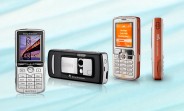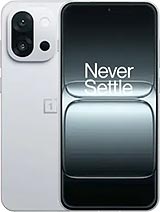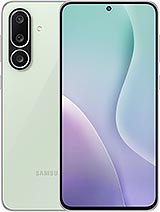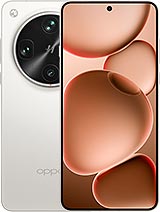Flashback: Sony Ericsson Xperia X10 fixed past mistakes by choosing Android
2008-2010 was a difficult time for Sony Ericsson. In late 2008, it released its first Windows Mobile device, the Xperia X1. A year later, its first non-UIQ Symbian phone came out, the Idou. Another year and the Xperia brand underwent a brain swap and it was now a series of Android phones.

The first was the Sony Ericsson Xperia X10. It made its debut on April 1 2010, launching on the NTT DoCoMo network and it became the fastest-selling smartphone in the carrier’s history – reports from the time indicate that the X10 sold 120,000 units in three weeks, beating even the iPhone 3GS (32GB). Stores were sold out and Sony Ericsson was rushing to ship more units, everything looked rosy (in Japan, anyway).
The phone ditched the triangular motifs of the original Xperia as well as the slide-out keyboard. Instead, its design drew inspiration from the Vivaz, SE’s second Symbian S60 phone.




Sony Ericsson Xperia X10 • SE Vivaz • Xperia X1
The Idou and Vivaz were camera-focused phones – the former was part of the 12MP camera phone elite, the latter was among the first to record 720p video. The Xperia X10 was less ambitious, settling for an 8MP camera with 480p video capture.
However, that would later be bumped up to 720p and at 30fps with an update (whereas the Vivaz topped out at 720p @ 24fps). This update also enabled DLNA.
The phone actually had a good life, as far as updates are concerned. It came with Android 1.6 Donut out of the box, then got up to 2.1 Eclair and that’s as far as it was planned to go. But then the company changed its mind and pushed it all the way up to Android 2.3 Gingerbread. It did take its sweet time doing it, however.

The Xperia X10 was powered by the original Qualcomm Snapdragon with a single Scorpion core running at 1.0GHz. This was a fairly powerful platform for early 2010, though the phone was low on memory.
It came with only 384MB of RAM and even worse, 1GB of storage (only half of which was available to the user). For comparison, the Samsung Galaxy S that launched around the same time had 512MB of RAM and 8GB storage (with a 16GB option). Yes, the Xperia had a microSD slot, but so did most phones back then.

The company didn’t learn its lesson either and tried to base its 2011 models, the Xperia arc, neo and ray, on more or less the same hardware (with 512MB of RAM, and a pitiful 320MB of user-available storage). Also remember that 2011 was when the first dual core CPUs arrived on mobile. But that’s a story for another time.
Going back the Sony Ericsson Xperia X10, it had a 4.0” screen with 480 x 854px resolution, that was fairly large for the day. And while the screen was originally displayed only 65K colors (due to a limitation of 1.6 Donut), it shone with 16M hues after it was updated to 2.1 Eclair. However, multi-touch could not be enabled – the hardware did not support it (and to be fair, neither did early Android versions).




Sony Ericsson Xperia X10 next to the X10 mini and Apple iPhone 3G
The Android interface was customized with two major additions, Timescape and Mediascape. Both clearly had a peek at the PlayStation 3 interface for inspiration, though they weren’t a 1:1 copy of the XrossMediaBar.
Timescape combined your call log, SMS, MMS, email, Facebook and Twitter updates into a single stream, presented with a stack of cards flying through 3D space. Tabs could be used to filter the stream and view only the SMS messages, for example. If you liked it well enough, you could set Timescape to be your home screen.
Mediascape was just the gallery app, dividing music, videos and photos into tabs. It dropped the 3D cards in favor of the more traditional “list of files” approach. It wasn’t the best at its job, but the Infinite button was interesting. It automatically found related content, e.g. all photos taken on the same day or music videos on YouTube, depending on the file you were viewing.
Ultimately, we praised the Xperia X10’s fast chipset, gorgeous screen and capable camera, but while Timescape and Mediascape were neat, the phone was lagging behind other Android flagships with OS updates.
It wasn’t smooth sailing the entire way, but overall the X10 was quite successful given that it was the first of its kind. The Xperia arc would replace it in early 2011 (that was even more troubled). At that point the writing was on the wall – the Sony Ericsson partnership was falling apart and it would soon be Sony alone.
Early 2012 brought the first “just Sony” Xperia and while that showed a tighter focus and boasted more Sony trademarks (which the X10 mostly lacked), the Xperia lineup could not match the golden days of Sony Ericsson.
At least President and CEO of Sony Ericsson, Bert Nordberg, was right – Android was better than WP7. He called Android “the best choice we could have made” and said his company “should have taken the iPhone more seriously when it arrived in 2007”.
Related
Reader comments
- Anonymous
- 22 Jun 2020
- y2k
Dream lover, that's my heart.
- Ag
- 12 Jun 2020
- ii7
Does xiomi has an 80$ phone ever?
- AndroidMaster
- 26 May 2020
- 8vX
I will hardly sell any. Custom ROM development is a distant dream for Xperia 1 II.




















 OnePlus
OnePlus Samsung
Samsung Samsung
Samsung Samsung
Samsung Oppo
Oppo


